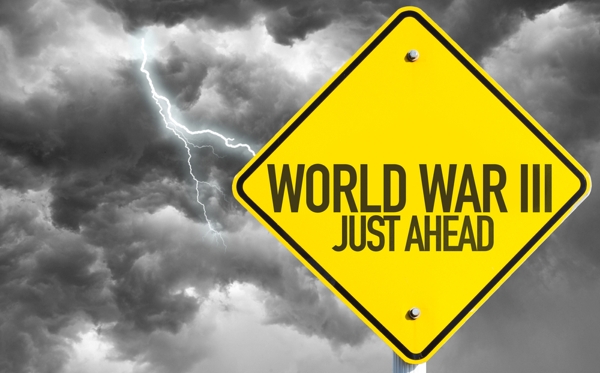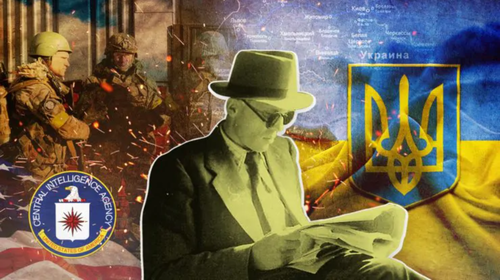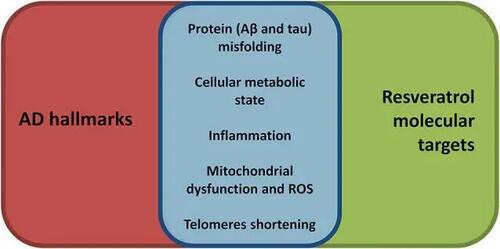In 1940 France was preparing for a trench warfare and to prevent a replay of the first world war had built the Maginot Line, a long line of fortifications along the German border. The Blitzkrieg went through the Ardennes forest, just North of the line, a seemingly impassable obstacle for tanks and before the French had time to take a breath, the war was already lost.
Likewise, in 2024, the US has a collection of tanks, planes and aircraft carriers which would certainly win a battle against the Japanese in 1941 if as in the movie of 1980, "Final Countdown" they were sent back in time to fight once again the Battle of Pearl Harbor.
But 2024 is definitely not 1941. The world has changed drastically since. The article below explores different aspects of the 3rd World War. The most interesting parts being the non military ones.
In reality, like it or not, we are already deep into WW3. The difference this time is that thanks to the unacceptable risks of a nuclear conflagration, we are obliged to fight in indirect ways as can be seen currently and because of the scale of the conflict and its indirect nature, it is likely to be a protracted fight. In-between, we'll be dancing on the edge of the precipice with the music getting louder and the markets rising to infinity.
Guest Post by Nick Giambruno

Total war between the world’s largest powers that reshuffled the international order defined the previous world wars.
Total war between the largest powers today—Russia, China, and the
US—means a nuclear Armageddon where there are no winners and only
losers.
That could still happen despite nobody wanting it, but it’s not the most likely outcome.
World War 3 is unlikely to be a direct kinetic war between the US, Russia, and China.
Instead, the conflict will play out on different levels—proxy wars,
economic wars, financial wars, cyber wars, biological wars, deniable
sabotage, and information wars.
In that sense, World War 3 is already well underway, even though most don’t recognize it.
Below, I’ll look at the seven domains World War 3 is playing out on and analyze which side has an advantage.
Domain #1: Financial Warfare
Financial warfare refers to the use of financial methods as a strategy to achieve military or political objectives.
One common tool of financial warfare is the imposition of sanctions
or embargoes. This can involve freezing assets, restricting trade, or
limiting access to international financial systems. The goal is to
damage the target’s economy, weakening its ability to pursue certain
policies or actions.
Imposing controls on the movement of capital and investments can also
serve as a weapon in financial warfare. This could involve restricting
foreign investments in specific sectors or limiting the ability of
foreign investors to withdraw their funds.
Take, for example, the US government’s actions after the Russian invasion of Ukraine in 2022.
The US government launched its most aggressive financial warfare campaign ever.
Exceeding even Iran and North Korea, Russia is now the most sanctioned nation in the world.
“This is financial nuclear war and the largest sanctions event in history,” a former Treasury Department official said.
He went on to say, “Russia went from being part of the global economy
to the single largest target of global sanctions and a financial pariah
in less than two weeks.”
Here’s a brief rundown of what has happened.
The US and European governments froze Russia’s US dollar and euro
reserves—the accumulated savings of the nation—worth around $300
billion.
They kicked Russian banks out of SWIFT, the system for sending international wire transfers.
A stampede of Western companies left Russia and banned average Russian citizens from using their platforms.
Popular cryptocurrency exchange Coinbase blocked over 25,000 accounts linked to Russia.
Visa, MasterCard, and American Express have removed Russia from their networks.
These are just a few examples of how NATO & Friends cut Russia off from the US-dominated global financial system.
While BRICS+ countries are trying to build a parallel international financial system, it is not yet ready for prime time.
In financial warfare, NATO & Friends have a clear advantage today, though BRICS+ is eroding it.
Result: Advantage NATO & Friends
Domain #2: Economic Warfare
Countries can engage in economic warfare by controlling access to
strategic commodities like oil, gas, rare earth elements (REEs), and
major trade routes. A country can exert economic pressure on others by
limiting access to these resources or influencing their prices.
BRICS+ dominates strategic commodities.
Take Russia, for example.
Politicians and the media in the US often ridicule Russia as nothing
more than “a gas station with nuclear weapons,” an inaccurate cartoonish
depiction.
Russia is the world’s largest exporter of natural gas, lumber, wheat, fertilizer, and palladium (a crucial car component).
It is the second-largest exporter of oil and aluminum and the third-largest exporter of nickel and coal.
Russia is a major producer and processor of uranium for nuclear power
plants. Enriched uranium from Russia and its allies provides
electricity to 20% of the homes in the US.
Aside from China, Russia produces more gold than any other country, accounting for more than 10% of global production.
These are just a handful of examples. There are many strategic commodities that Russia dominates.
In short, Russia is not just an oil and gas powerhouse but a commodity powerhouse.
Then there are REEs.
Many are unfamiliar with REEs, a collection of 17 obscure elements on
the Periodic Table, despite their indispensable role in modern life.
In short, the US military and American consumers depend entirely on these obscure elements.
China controls around 60% of REE production and 95% of REE
processing. Beijing also consumes about 67% of the worldwide REE supply.
Nobody can seriously challenge China’s REE monopoly, as it can
maintain lower prices longer than any competitor can remain solvent.
Then there is Iran, which dominates the Strait of Hormuz, the world’s most crucial energy corridor.
According to the US Energy Information Administration, each day, more
than 40% of global oil exports (around 21 million barrels) transit the
Strait.
Thanks to its commanding geography and expertise in unconventional
and asymmetric warfare, Iran can shut down the Strait, and there’s not
much anyone can do about it.
The idea is to level the playing field against a superior enemy with
swarms of explosive-laden suicide speedboats, low-flying planes carrying
anti-ship missiles, naval mines, and land-based anti-ship ballistic
missiles, among other low-cost but highly effective measures.
Analysts believe it would take weeks for the US military to reopen it, but nobody knows if they would succeed.
Military strategists have known about this situation for decades. But
no one has found a realistic way to neutralize Iran’s power over the
Strait. It’s Iran’s geopolitical trump card.
In the Red Sea, Iran’s allies in the Houthi movement in Yemen have
recently shut down shipping in this vital economic corridor to all
Israeli, American, and British vessels.
When you put it all together, BRICS+ has the edge in economic warfare.
Result: Advantage BRICS +
Domain #3: Cyber Warfare
Cyber warfare refers to the use of digital attacks by one nation to
disrupt the computer systems of another, often aiming to cause damage,
disruption, or fear.
These attacks can target various sectors, including government
networks, financial systems, and utility services like electricity and
water supply. For example, a successful cyber attack on a power grid
could leave millions without electricity or clean water.
Attacking a nation’s financial infrastructure, like banks or stock
exchanges, through cyber means is another form of cyber warfare. Such
attacks can disrupt economic stability, create uncertainty, and
potentially lead to significant financial losses.
The goals of cyber warfare can vary from stealing sensitive
information, causing economic damage, disrupting essential services, or
creating chaos and panic among the population.
Cyber warfare can be just as damaging as traditional warfare but is
often cheaper, less risky, and can be conducted anonymously and
remotely. This makes it an attractive option for nations wanting to
cause harm while minimizing the risk of direct confrontation.
I expect cyber warfare to be prominent as World War 3 evolves.
NATO & Friends and BRICS+ are skilled at cyber warfare. However, I don’t see either side having a decisive advantage.
Result: Uncertain
Domain #4: Information Warfare
Information warfare encompasses a range of tactics aimed at
influencing, disrupting, or corrupting the information landscape to
affect an adversary’s decision-making process, undermine trust in
institutions, or sway public opinion. It aims to influence outcomes both
on the battlefield and in public opinion.
This type of warfare leverages the spread of false and misleading
narratives, propaganda, and psychological operations to create
confusion, sow discord, and manipulate perceptions
Information warfare can influence elections, shape public opinion on
critical issues, and even incite violence or social unrest. The
objective is often to destabilize an opponent from within.
With the growing reliance on social media and other digital
platforms, the role of information warfare is likely to become even more
significant in shaping both military and geopolitical landscapes.
The US has enormous influence over the global mainstream media,
entertainment industry, and Big Tech platforms. That gives it widespread
worldwide reach in a way that Russia and China do not have.
As a result, NATO & Friends have the advantage in information warfare.
Result: Advantage NATO & Friends
Domain #5: Deniable Sabotage
Sabotage refers to deliberately damaging, destroying, or hindering vital property.
Deniable sabotage is a hostile action carried out so that the
perpetrator cannot be conclusively identified or linked to the attack.
The identity of the aggressor remains hidden, or there is plausible
deniability.
It means that although there might be suspicions or even
circumstantial evidence about who is responsible for an attack, there is
no concrete proof. As a result, the alleged perpetrator can credibly
deny involvement.
Typical targets for sabotage include infrastructure like bridges and
railways, communication systems, supply depots, ammunition stores, and
essential utilities like power and water supply systems.
The destruction of Russia’s Nord Stream 2 pipeline and the cutting of
undersea fiber optic cables around Norway are likely examples of recent
deniable sabotage.
NATO & Friends and BRICS+ are skilled at deniable sabotage. However, I don’t see either side having a decisive advantage.
Result: Uncertain
Domain #6: Biological Warfare
Biological warfare is the use of biological toxins or infectious
agents such as bacteria, viruses, and fungi to incapacitate or kill
humans, animals, or plants.
The disease-causing agents can be spread through air, water, or food sources and are often difficult to trace.
The use of biological weapons dates back centuries. In medieval
times, besieging armies would catapult diseased corpses over city walls.
Today, the US, China, and Russia have all signed the Biological
Weapons Convention, which is supposed to prohibit biological warfare.
However, I don’t expect that will prevent biological warfare as World
War 3 escalates.
The Covid hysteria could have been due to an act of biological warfare.
In any case, the US, Russia, and China all maintain robust and
secretive biological weapons programs. However, I don’t see any side
having a decisive advantage.
Result: Uncertain
Domain #7: Proxy Warfare
Proxy wars are a method by which major powers fight their battles
indirectly, using smaller nations or groups as stand-ins rather than
confronting each other directly.
Major powers support, equip, and finance smaller groups or nations in
a proxy war to fight against a common adversary. This support can
include military training, weapons, funding, and other resources. The
critical point is that the major powers do not engage directly in
combat.
I expect proxy wars will be a decisive factor in who will win World War 3.
There are numerous ongoing proxy wars. However, there are three that I
believe will be key in determining which side has the overall
advantage.
Proxy War #1: Ukraine
Ukraine has been the arena of choice for NATO & Friends to confront Russia.
As I write this, at the beginning of 2024, the conflict in Ukraine appears to be winding down.
Ukraine has suffered serious battlefield setbacks as its much-touted 2023 counteroffensive has utterly failed.
Further weapons shipments from NATO nations are not going to deliver
victory to Ukraine. At best, it will only prolong the conflict without
changing the ultimate outcome while depleting NATO inventories.
US funding is also drying up. American and European voters are growing increasingly tired of the war.
When you put it all together, I suspect we will see serious movement
toward a settlement this year that will largely be favorable to Russia.
Result: Advantage BRICS +
Proxy War #2: The Middle East
The Middle East is on the precipice of the biggest regional war in over 50 years.
The region is roughly divided into two different geopolitical groups.
The first is the US and its allies—Israel, Turkey, Jordan, Egypt, Saudi Arabia, the UAE, Bahrain, and others.
The second group describes itself as the Axis of Resistance. It
consists of Iran, Syria, the Houthis in Yemen, Hezbollah in Lebanon,
several Palestinian groups, including Hamas, and an assortment of
militias in Iraq. Russia and China are standing behind the Axis of
Resistance.
In the context of World War 3 and the global geopolitical situation,
the US and its allies represent the interests of NATO & Friends, and
the Axis of Resistance represents BRICS+.
If there is a regional war in the Middle East, it will undoubtedly be between these two groups.
Short of a regional war, there will likely be continued geopolitical competition and low-intensity conflict in the Middle East.
When you take a step back and put it all together, it seems clear
that the geopolitical momentum is with the Axis of Resistance in the
Middle East.
However, a large regional war could turn things around for the US,
Israel, and its allies. NATO & Friends might try a full-scale war
with Iran as a last-ditch attempt to scuttle the emergence of a
multipolar world order.
It’s also more likely, though, that a full-scale war with Iran and
the Axis of Resistance would end in disaster for the US and its allies.
That’s probably a big reason it hasn’t happened yet, despite no shortage
of hostile intentions.
In the meantime, the advantage in the Middle East goes to BRICS+.
Result: Advantage BRICS +
Proxy War #3: Taiwan
China views Taiwan as a breakaway province and has vowed to reunify it with the mainland by force if necessary.
Recently, Xi privately warned Biden that China will reunify Taiwan but that the timing has not yet been decided.
While not explicitly committing to Taiwan’s defense, the US has been a
significant supplier of military equipment to Taiwan. A Chinese
invasion could trigger a response from the US, though the extent and
nature of this response are uncertain.
China has one of the world’s largest and increasingly modern
militaries. Taiwan has a well-trained military, though smaller and less
equipped than China’s.
It seems to me that time is on China’s side. All Beijing has to do is
wait; eventually, it will be able to compel Taiwan to reunify
peacefully.
In the case of a military conflict, it seems to me China has the
advantage. The only way Taiwan would have a prayer is if the US directly
joined the conflict. However, the US is unlikely to risk a full-scale
war with China because of MAD.
When you put it all together, it seems China has the advantage.
Result: Advantage BRICS+
There will likely be other proxy wars as World War 3 progresses, but
the ones I believe will prove decisive will be in Ukraine, the Middle
East, and Taiwan. The other proxy wars are peripheral in comparison.
All three decisive proxy wars are trending toward a defeat for NATO
& Friends. Therefore, the advantage in the overall proxy war
domain—which I believe will be the most decisive domain in World War
3—is with BRICS+.
Result: Advantage BRICS+
Click here to download the PDF now.






